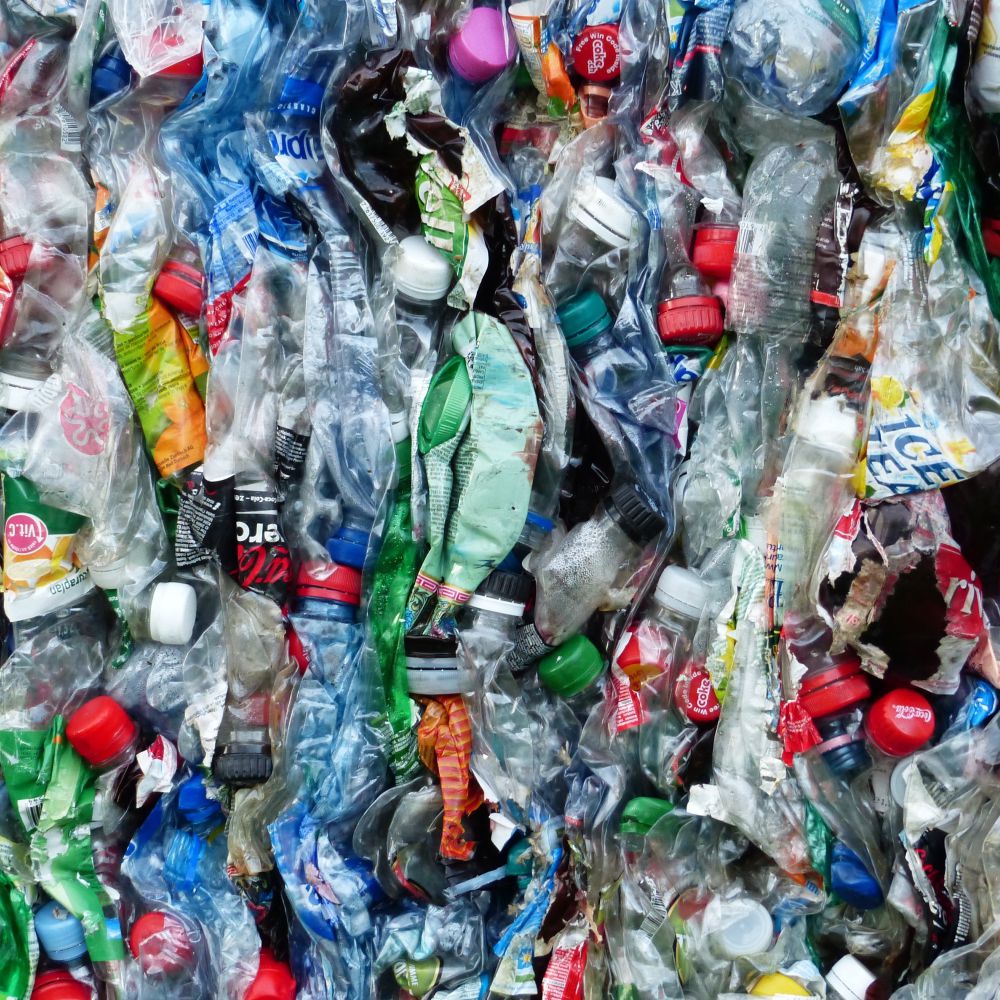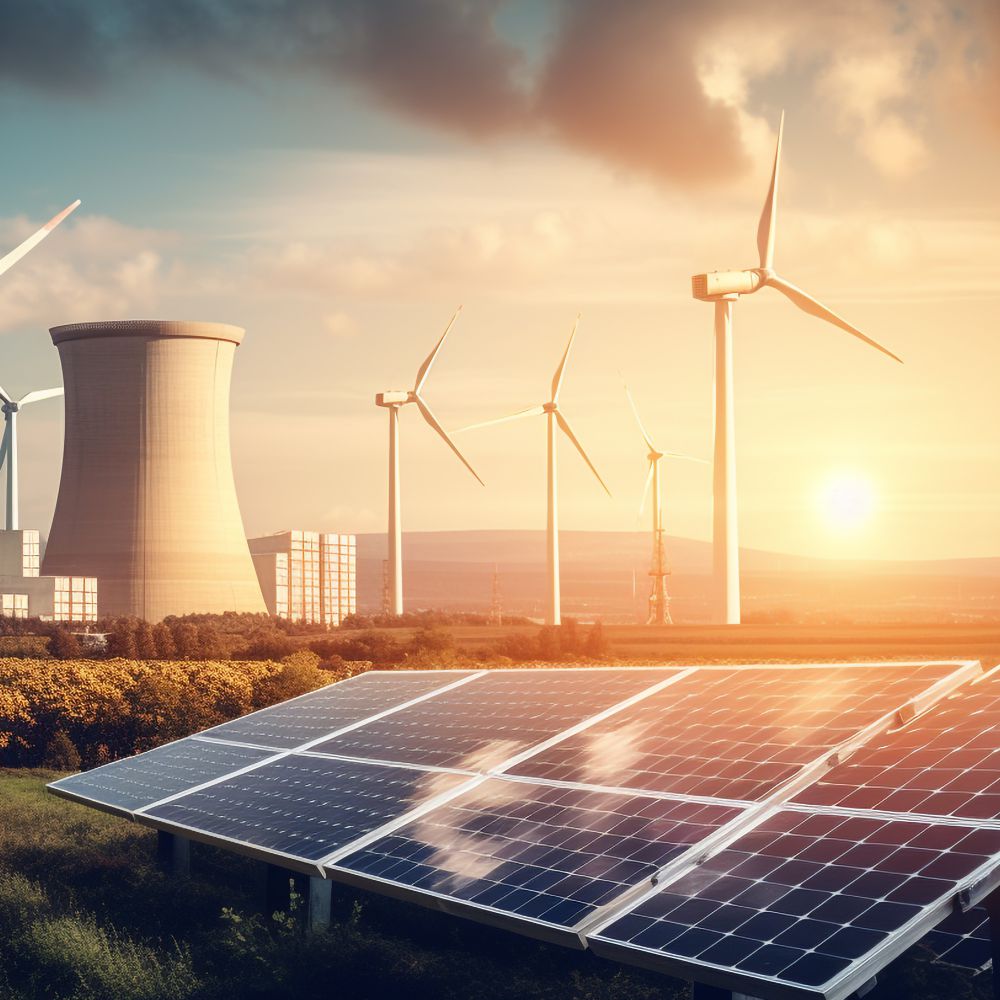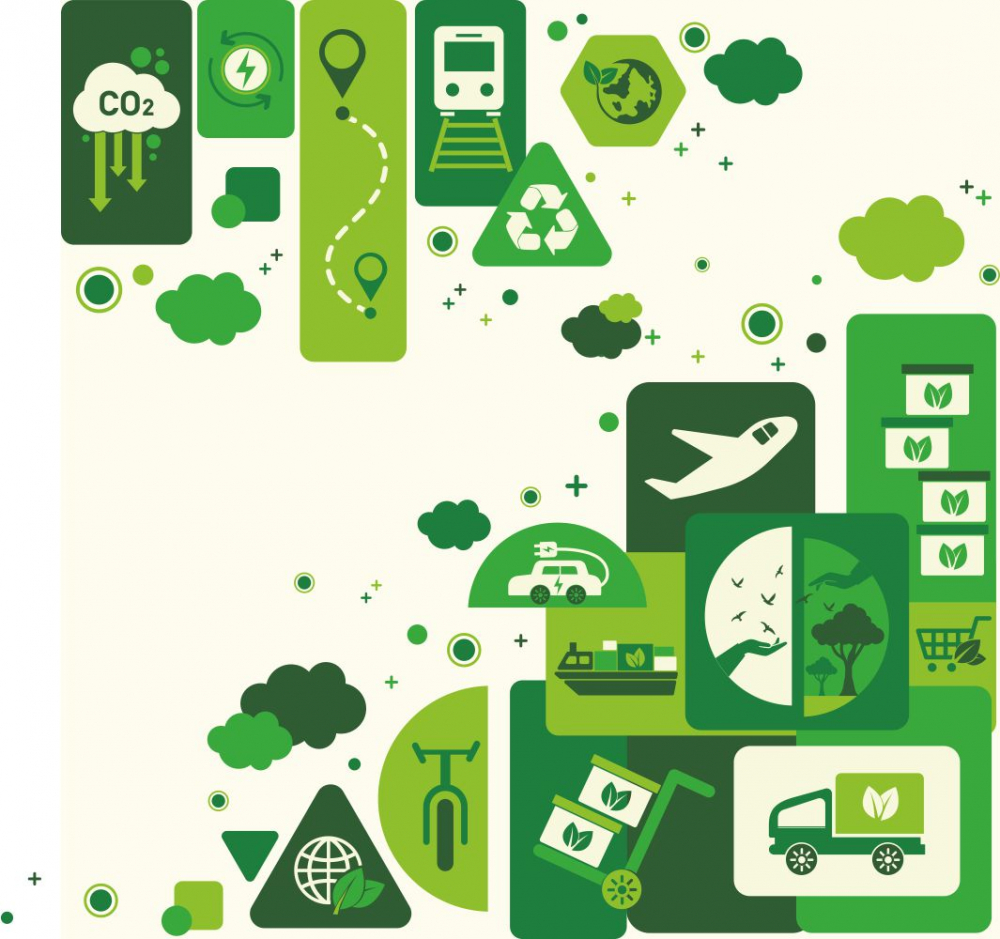As concerns over climate change and plastic pollution are looming large, sustainable packaging is sure set to take centre stage for companies in driving their sustainability agenda. Besides, sustainable packaging also aligns with consumer sentiments and helps companies lure a larger customer base looking for products that reflect their commitment to a greener future. While nascent progress is already being made in this regard, to attain small yet significant impact, organizations can reduce their environmental footprint using recyclable, biodegradable or materials made from renewable resources. Our Special Report highlights and stresses on leading companies’ forward stance towards sustainable packaging and traces the changing landscape of packaging…
Shourjomay Chattopadhyay, counsellor, CII, stated during the launch of The India Plastics Pact Annual Report 2022-23, “IPP signatories place 6,50,000 tonnes of plastic packaging on the Indian market. This, in turn, could be categorised on the basis of type, format and consumption. About 60% of the packaging placed on the market is rigid packaging and the remaining 40% is flexible packaging. Primary packaging contributes 91%, while secondary and tertiary account for 9% of consumption.” This is an alarming number and deserves immediate attention from all the stakeholders concerned.
In sync with this, a recent Euromonitor study highlighted that for businesses to thrive in a more stringent regulatory environment, a consumer-focused approach that factors in their environmental impact is vital. By rethinking packaging design to promote circularity and accelerating the shift to sustainable packaging, companies can not only reduce their costs and environmental footprint but also avoid the rising costs associated with inaction, enhance consumer engagement and ensure regulatory compliance.
According to India Plastics Pact report, where elimination is not viable, businesses should innovate to ensure that packaging remains in the economy for longer by introducing reusable packaging and ensuring single-use packaging is being recycled back into packaging. Most small format packaging used today is not recyclable because of its multi-layered structure. In the past few years advancements have been made resulting in the development of monolayer or compatible multi-layer packaging which provides equivalent barrier properties while being recyclable.
For instance, EPL partnered with Colgate-Palmolive to develop mono-layer HDPE tubes which can replace the multi-layer plastic aluminium tubes currently used by many toothpaste manufacturers. Mono-layer flexible packaging with good barrier properties has been developed by several companies around the world. These can replace the multi-layer packaging used for packaging salty snacks, biscuits and confectionery items. Many of the brand owners interviewed are already running trials of monolayer or polyolefin-based compatible multi-layer packaging.
Brands can also consider alternative business models which can help reduce plastic waste generation while ensuring that consumers still have access to affordable products. Reuse models can help do this by allowing consumers to buy desired quantities of a product in reusable, refillable packaging. Such a model is well-suited to home care and personal care products where hygiene requirements are not as stringent as those for food and beverages. Of the priority products identified, reuse models for shampoos, toothpastes and detergents have already been piloted by several businesses around the world. Running a successful reuse model at a scale large enough to have an impact will require significant investment in establishing reverse logistics and an increased demand among consumers.
REDUCE AND RECYCLE LEAD CONSUMERS’ ENVIRONMENTAL ACTIONS
Global consumers are highly concerned and well-intended around sustainability, as 64% of global respondents are worried about climate change and trying to positively impact the environment through daily actions, according to Euromonitor International’s Voice of the Consumer: Sustainability Survey. Yet, almost half of them feel guilty for contributing to the problem, while highlighting affordability and lack of assortment as the main barriers preventing them from shopping more sustainably.
However, they still show high interest in being part of the solution. This is clearly driven by reduce and recycling habits, globally. In 2023, consumers sought value and financial efficacy while maintaining a commitment to sustainability. Thrifty habits, such as prolonging product lifespan and waste reduction, not only saved money but also lessened environmental impact. This commitment extended to actions such as minimising plastic use and opting for recyclable or compostable packaging.
COMPANIES’ INNOVATIVE STREAKS
Consumer brands and retailers are employing packaging design strategies to maximise margins and increase operational efficiencies to offset increased costs while meeting financially pressured consumers, according to Euromonitor. By eliminating unnecessary packaging, reducing components, and altering materials, companies are not only cutting costs but also reducing raw materials used, maximising shipping space and lightweighting, therefore curbing their environmental footprint.
Refill pouches are emerging as a cost-effective, convenient alternative to rigid plastics in various sectors such as food, beverages, beauty, and home care. These reduce plastic use, but their recyclability is a concern, considering their forecasted 4% CAGR from 2022-2027. Innovative solutions such as Henkel's recyclable mono-material Pril pouch and Nescafé's 150g refill pouch, which can be recycled at over 5,000 UK stores and via kerbside collection in Ireland, are noteworthy alternatives addressing this challenge.
Additionally, paper packaging is gaining traction among retailers and consumer brands, with bag-in-box (ships-in-own-box) solutions being popular for their space optimisation, distribution efficiency, and recyclability. Furthermore, concentrated formulations, besides offering convenience, efficiency and waterless attributes, are paving the way for sustainable packaging innovation across FMCGs categories. For example, the new Tide Evo laundry detergent, besides including efficient water-saving fibre tiles, is packed in FSC certified ready-to-recycle paperboard.
The IPP report highlighted that Target 1, aimed at eliminating unnecessary or problematic plastic packaging, saw Marico switch from PVC to PET-G packaging for its Nihar Naturals hair oil container; and Bisleri replace the full-body PVC shrink sleeve on carbonated soft drinks to BOPP-centre panel labels and reduce the weight of HDPE caps of Bisleri water bottles from 1.50 g to 1.35 g, saving the consumption of 489 tons of plastic in FY 22-23.
Also, ITC, Vahdam Teas, Godrej Consumer Products and Hindustan Unilever have transitioned some SKUs to recyclable structures and refillable packaging to meet Target 2 of the Pact. “The amount of reusable packaging placed on the market by IPP Members increased by 115% from 1,487 tonnes (in 2021) to 3,203 tonnes (in 2022),” highlighted Chattopadhyay. “It is worth noting that nearly 80% of rigid packaging placed on the market by IPP members in 2022 was made of PET, which is highly recyclable in the Indian context.”
COFFEE PACKAGING
According to sustainability researcher Gunter Pauli, global coffee production generates more than 23 million tons of trash every year. To curb this challenge, ITC has created one-of-its-kind compostable coatings in paper-based tea envelopes and recyclable laminates in coffee bean packs. Both of these packaging options are exemplary in terms of reducing the environmental impact of food packaging materials and methods. Incorporated in the Fresh & Honest Coffee Pack, the ultra-high barrier recyclable laminate protects the contents against the most common challenges like moisture, vapour, and oxygen. This recyclable laminate is manufactured using green energy alternatives, making it one of the most eco-friendly option among contemporary beverage packaging solutions.
Featured in Reva Tea Packaging, ITC's patented innovation, BioSeal, is a compostable sealant coating that replaces conventional polyethylene-based coatings. Made from a mixture of natural colours with vivid hues, BioSeal ensures the tea packaging is not only attractive but also fully biodegradable. This ground-breaking solution significantly reduces the chances of packaging turning into hard-to-dispose garbage or ending up as landfill waste.
TACKLING E-WASTE
One estimate from the World Electrical and Electronic Equipment (or WEEE) Forum pegs the amount of electronic waste that ends up in the trash every year at more than 63 million tons worldwide. Pound for pound, the WEEE Forum notes, the amount of e-waste generated annually—a figure that includes everything from laptop computers to microwaves and mobile phones—is heavier than the Great Wall of China. By 2030, the WEEE Forum predicts, the global total for tossed electronic waste will likely top 81 million tons.
From Dell’s perspective, as offered by Nick Abbatiello, Sr. Distinguished Engineer in Sustainable Materials & Circularity, and Allison Ward, Senior Sustainable Materials Engineer, Dell Technologies, “While repairing and reusing and all means of recycling are all critical to cutting e-waste, these efforts would have limited impact if we didn’t lay the groundwork for their success. For example, imagine if the laptops we made were all but impossible to take apart. And who would choose to recycle their computer if it was prohibitively expensive?”
They elaborated… First, on the product-creation front, we always strive to “design for repair, “We want our computers to be physically easy to fix, with parts that are easily accessible, replaceable, and reusable. Other environmental considerations also factor into our e-waste calculations, of course. For instance, can we justify shipping components halfway across the world just to recycle them? Do we want a recycled part produced in a coal-powered smelting factory? Should we instead procure that component elsewhere—like the hydro-powered smelter down the road? The bottom line is, when it comes to e-waste, we want to be sure that any action does more for the planet than it takes away. Determining if that’s the case isn’t always straightforward, but we know it’s always the right thing to do.”
PERFUME PACKAGING
The Estée Lauder Companies (ELC) has issued a report on its latest eco-friendly packaging initiatives and advances in sustainability made by each of its brands. One highlight: 71% of all ELC's packaging is now recyclable, refillable, reusable, recycled, or recoverable. Nancy Mahon, Chief Sustainability Officer, ELC, commented, “We have an opportunity to take our packaging innovation to an even greater level by continuing to implement sustainability principles that allow us to create elegant solutions for our consumers while keeping the environment in mind.”
ELC says it aims to elevate consumer experience by implementing materials and packaging solutions with sustainability, luxury, functionality, compatibility, and quality in mind. The Aveda brand approaches responsible packaging with the development of paper-based, locally recyclable sachets for product samples. Compared to their plastic predecessors, the production of this sachet is said to reduce water consumption by at least 36% and emit 37% fewer greenhouse gases.
The Estée Lauder brand used glass packaging to advance its luxury and sustainability design approach to help drive the relaunch of its Revitalizing Supreme + Moisturizer Youth Power Creme, which now offers a refillable pod to help minimize packaging weight by 90%, compared to the previous non-recyclable packaging design.
Rob Peterson, Senior Vice President, Global R&D and Supply Chain commented, “On our journey to drive sustainability in luxury packaging, it is crucial to understand the challenges we face in the industry and to create partnerships and collaborations with sustainability organizations, recyclers, and suppliers that expand our knowledge about our packaging materials and formats. At ELC, we believe packaging enables new, agile and unique value propositions that can help advance sustainability solutions for our brands and for the personal care and cosmetics industries at large.”
BEVERAGE PACKAGING
Coca- Cola India has taken a significant stride towards sustainability by launching Coca-Cola® in 100% recycled PET (rPET) bottles in 250 ml and 750 ml sizes. The move follows their earlier launch of a 100% rPET one-litre bottle for their Kinley packaged drinking water brand. These rPET bottles are produced in partnership with Coca-Cola bottling companies, Moon Beverages Ltd., and SLMG Beverages Ltd.
This expansion of rPET bottles underscores Coca-Cola India's commitment to a greener and more sustainable future. The bottles, composed of 100% food-grade rPET (excluding caps and labels), feature an on-pack message encouraging recycling, "Recycle Me Again," along with a clear "100% recycled PET bottle" label. These eco-friendly bottles are crafted from food-grade recycled polyethylene terephthalate (PET) using recycling technologies approved by the US FDA and European Food Safety Authority (EFSA). By repurposing recycled plastic into new PET bottles, Coca-Cola reduces its reliance on virgin plastic.
FMCG PACKAGING
Procter & Gamble (P&G) brand Tide has launched a new form of laundry detergent called Tide evo, which is a square-shaped, six-layer “tile” of concentrated ingredients woven together. The design of the thin, malleable fiber tile was driven by consumer insight and with sustainability in mind. "Tide evo embodies over a decade of research and development, signifying a major advancement in how we approach cleanliness and efficiency in our daily lives," says Sundar Raman, chief executive officer, P&G Fabric & Home Care.
P&G’s research found that consumers expect increasing levels of convenience. The company’s response was to develop the Tide evo fiber tiles, which are lighter, faster, and simpler than its other detergents. To be evermore environmentally conscious, the tiles are also designed using tens of thousands of miniscule fibers to create layers of soap without extra liquid and fillers while eliminating the need for plastic bottles. This new detergent dissolves upon contact with water.
The fiber tiles, measuring approximately 3.5 x 3.5 in., are packaged in a hinged-lid paperboard carton that is approximately 3.5 in. W x 5.7 in. D x 7.1 in. L. The carton is stored upright on the shelf and open on the right side, after a perforated strip is removed. A click tab enables easy opening of the package for access to the tiles. It also allows the carton to be securely reclosed.
Inside is a specially designed trays with one partition that separate the tiles into two stacks. The trays provide structural support to the carton, so it maintains its shape from factory to consumer home, while simultaneously keeping the tiles securely stacked. The trays ensure the integrity of both the product and the package’s squareness, according to Marcello Puddu, senior director of Fabric Care Research & Development at P&G.
FOOD & SNACKS PACKAGING
Thanks to the slowly increasing availability of new materials, such as recycled content for flexible film in key markets, as well as supply chain adjustments and successful line trials across a complex network of manufacturing facilities, Mondelez continues to make progress. In 2023, the company was able to reduce its plastic packaging footprint by about (2.3)% versus 2020, offsetting the significant growth that the business has been able to deliver. In its rigid plastic portfolio, it has been working with suppliers to secure new innovative materials and planning trials that will enable the company to drive scale as it plans to expand these initiatives across markets while continuing to maintain high standards for safety and quality.
Of the 123 businesses that contributed data for the Ellen MacArthur Foundation (EMF)’s 2023 Global Commitment Progress Report, Mondel?z International was singled out as the brand that reported the highest tonnage elimination of plastic packaging: over 12,000 metric tonnes. This was achieved by moving about 71% of polystyrene (a versatile material that can be rigid or formed) to polyethylene, terepeththalate (a clear, durable and versatile material), eliminating all undetectable black plastic from its portfolio with a specific focus in North America and resizing products, resulting in reductions in metric tonnes of plastic packaging used.
SUSTAINABLE PACKAGING THE AMAZON WAY
Reducing packaging waste is an important part of Amazon’s goal to become a more sustainable company, but choosing the most efficient, optimal amount of packaging that both reduces waste and protects products can be challenging. Plus, Amazon’s product catalog has hundreds of millions of items—and is always growing and changing, in addition to having regional and country-specific products worldwide.
The Package Decision Engine, an AI model that Amazon designed and built, is able to determine the most efficient type of packaging for each item it learns about, helping reduce the number of cardboard boxes, air pillows, tape, and mailers used to send purchases to customers. The model is an important example of how the company is using AI to meet its sustainability goals faster, while also helping reduce packaging, make deliveries more efficient, and ensure products remain protected during delivery. Along with other packaging innovations, the model has helped Amazon avoid over 2 million tons of packaging material worldwide since 2015.
Built on the Amazon Web Services (AWS) cloud, the multimodal AI model can predict when a more durable product like a blanket doesn’t need protective packaging, or when a potentially fragile item like a set of dinner plates might need a studier box. It uses a combination of deep machine learning, natural language processing, and computer vision, and is continuously learning about Amazon’s ever-evolving packaging options. Its decisions are empirically accurate, according to Amazon scientists, meaning that it predicts the most efficient package choice most of the time.
Prior to the use of AI, Amazon associates used physical testing on individual products to determine how to optimize packaging, but that sustainability work was impossible to scale through human efforts alone. The Package Decision Engine has helped automate portions of this work, allowing Amazon associates to focus on addressing other sustainability challenges.

Categories

Magazine Editions






















